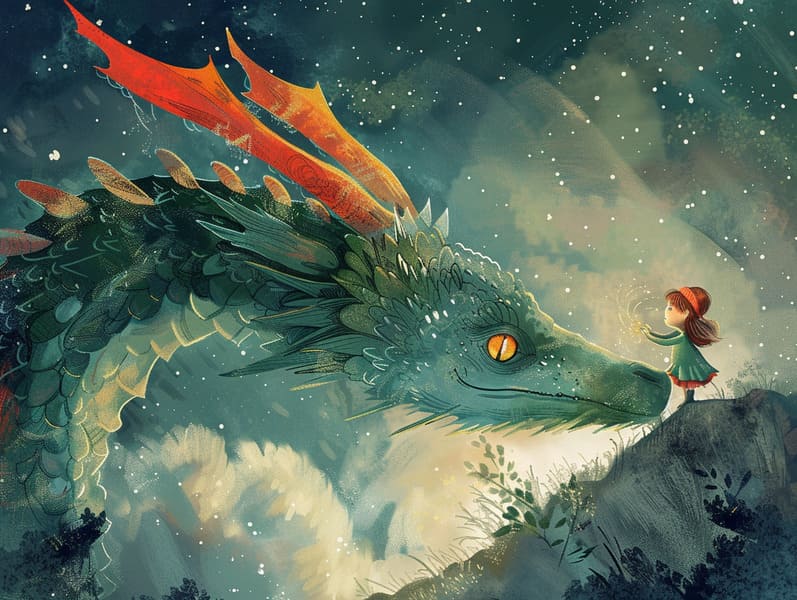
Legendary fairy tales have old origins. These narratives have been narrated from one generation to the next millennia before they were ever written down. They came from a variety of cultures, including Asian traditions. They were initially shared among adults, often carrying themes and messages reflective of the societal norms and beliefs of the time.
Jacob and Wilhelm Grimm, Jacob and Wilhelm (the Grimm brothers), were among the first to compile and release many of these beloved tales. Their anthology, "Grimm's Children's Stories," included tales like "The Story of Cinderella," "The Story of Hansel and Gretel," and "Snow White," which have since become classics in the world of children's fairy tales. Similarly, Hans Andersen's delightful tales, such as "The Little Mermaid," and "The Duckling's Story," have enchanted hearts worldwide, ensuring their place in the pantheon of beloved fairy tales.
Despite their ancient origins, these tales remain as important as ever, especially as children's night stories. These delightful tales are now available in different formats, including beautifully illustrated books, captivating animations, and internet fairy tales.
Their lasting presence can be ascribed to several magical reasons:
Valuable Lessons: Timeless fairy tales often present important moral lessons. Fairy tales like "The Tale of the Boy Who Cried Wolf" teach the benefit of truthfulness, while "The Tortoise and the Hare" highlight the qualities of resolve and modesty. These narratives offer the young clear distinctions between ethical and unethical, building their moral compass in a tender yet deep way.
Warmth and Understanding: Traditional fairy tales frequently illustrate heroes facing challenges and problems, stimulating young listeners to empathize with their struggles and applaud their triumphs. For instance, "Beauty and the Beast" highlights the importance of seeing inner beauty to realize the inner self of a soul, strengthening perception and comprehension.
Cultural Perception: Many classic fairy tales are deeply embedded in the cultural contexts from which they bloomed. Delving into these fairy tales can provide fascinating glimpses into different heritages, building a sense of world appreciation and perception.
Imagination and Creativity: The extraordinary elements in ancient fairy tales—magic wands—foster children’s innovative ideas. These fairy tales bring readers to extraordinary realms, unleashing inventive dreams and a sense of magic that remains a lifetime.
Ancient fairy tales are not only fantastical but also instructive. They function as entrancing tools in enhancing various intellectual and emotional capacities in little ones. When classic fairy tales are spoken out loud, they enhance language development by introducing new terms and meanings and elaborate sentence structures. This practice also boosts auditory skills and attention, as the young keep up with the story, enthusiastic to see what happens next.
Furthermore, examining the themes and characters of old fairy tales can promote reasoning skills and problem-solving abilities. Kids are shown to discover patterns, foresee events, and catch on to cause and effect. These explorations also promote kids verbalize their thoughts and feelings, nurturing their emotional intelligence.
In today’s digital era, the existence of free fairy tales online has made these stories more attainable than ever. Web platforms and apps present comprehensive collections of ancient fairy check it out tales that can be perused or listened through anytime, anywhere. Fairy tales read aloud are particularly sought after, extending an charming way for young ones to delight in these mesmerizing stories. Read-aloud books and read-out-loud stories guide characters and settings to life, often augmented by fantastical soundtracks and instrumentals that augment the narrative adventure.
The unfading fascination of ancient fairy tales lies in their ability to alter to present days while staying true to their underlying messages. Contemporary reimaginings of these fairy tales often present more diverse figures and modern settings, making them relatable to today’s audience. However, the main ideas of fearlessness, generosity, and truth remain unchanged, continuing to touch young readers of all ages.
Fairy tales also offer a sense of peace and familiarity. They share a organized narrative with a plain beginning, middle, and end, often winding up with the settlement of conflicts and the triumph of goodness over badness. This dependability can be comforting for the young, yielding a sense of steadfastness in an unstable world.
Ancient fairy tales continue to charm and guide new generations, maintaining their grace and applicability in modern society. As children's bedtime stories, they yield a perfect blend of captivation and insight, aiding moral values, empathy, and creativity. The abundance of web-based fairy tales and the well-liked nature of fairy tales told out loud ratify that these traditional narratives remain accessible to new generations.
By preserving and broadcasting these tales, we continue to appreciate the rich tapestry of myths and cultural heritage. Whether you are exploring a vividly illustrated book, exploring a virtual library, or playing an narrated book, the enchantment of classic fairy tales is always within reach. These fairy tales teach us of the unfading nature of fairy tales and its ability to bind us across centuries and lands.
Even if you are perusing a artistically illustrated book, enjoying a cyber library, or hearing an audiobook, the beauty of children's fairy tales is always within reach.
These tales convey of the persistent strength of tales and its ability to bind us across centuries and lands, creating a bond that fascinates and enlightens alike.